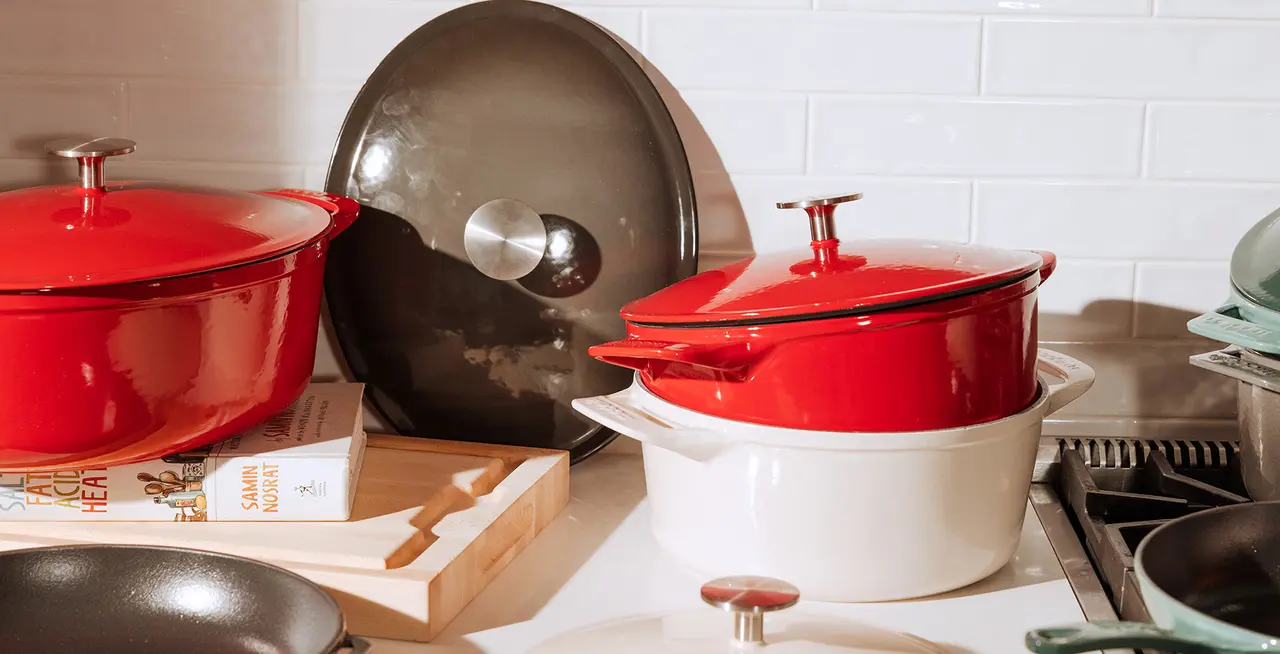Santoku knives are easily recognizable because of their unique fluted blade, but what sets them apart from other knives in your knife block? In Japanese, Santoku means “three virtues”. This is suspected to mean slicing, dicing, and chopping but another interpretation refers to the knife itself—the tip, edge, and heel—while the third interpretation refers to what you use it to cut—meat, fish, and vegetables.
We spoke to three chefs to find out what they use the Santoku for. They each had their own reasons, and we know you’ll have yours as well. Find out why this knife is a must-have in your kitchen, no matter what you’re slicing, dicing, or chopping.
Slicing Fish
“I started off with sushi, and always had a knife for everything. I love the Santoku for fish. It perfectly slices through fish and the skin, and is great for making a crudo with,” says Kevin Tien of Moon Rabbit in D.C. The Santoku is a great choice to cut through fish, where precision is key. You can use the tip can to remove bones, while the blade makes thin, even slices that still keep the delicate fish intact.
A Chef Knife may be the first thing you think of when you picture slicing but, the Santoku’s size and shape actually give it an advantage, especially when working with seafood. Chef Knives have curved blades so that you can make short work of small ingredients by keeping the tip anchored and rocking the edge and heel up and down.
In contrast, the Santoku’s blade is flat. The best way to cut is by lifting the whole blade up and bringing it down. This takes more time but ultimately gives you significantly more control over your cuts.
Dicing Vegetables
Chef Jo Chan of Eberly relies on a Santoku to streamline her prep process. “I use my Santoku like I would a smaller version of a cleaver, doing short, quick movements like chopping herbs or slicing endless onions. I love that the blade is fluted, it makes it easier to slice onions because the flutes allow pieces to slide off easier instead of sticking on like they can with a Chef Knife,” she says.
At just 7-inches, compared to the longer and thicker blade of an 8-inch Chef Knife, Santoku knives are also great for smaller cuts like a dice. The blade is slightly thinner too, measuring 15 degrees rather than the standard 20 of a Western-style knife. When it comes to prepping things like a sofrito or a mirepoix—both of which are the bases of dishes and therefore need to be fairly small—a Santoku is the knife for the job.
This is also where that fluted blade comes in handy. Vegetables like onions or zucchini have a high water content and can get stuck to the flat blade of a Chef Knife, or even a Nakiri, which is designed to cut vegetables. The fluted design helps the blade slide through wetter ingredients without them getting stuck.
Chopping Meat
When it comes to chopping meat, the flatness of the Santoku is crucial once again. Combined with the sharpness of the blade, you can press directly down on the spine (the top of the blade which connects to the handle) to create uniform cuts. As with all knives, this is why it’s essential to keep your Santoku sharp so it performs its best.
The technique for chopping is essentially the same as slicing. With a chop however, you’re holding your knife straight and perpendicular to your cutting surface, rather than at an angle like you typically do when you’re slicing. The quick, intentional, downward cuts actually make this even faster with a Santoku than with a Western Chef Knife.
While a Santoku will by no means replace your Chef Knife, it’s a great alternative for different ingredients and techniques. Choose from a POM or wooden handle, and add a Santoku to your knife block today.
























